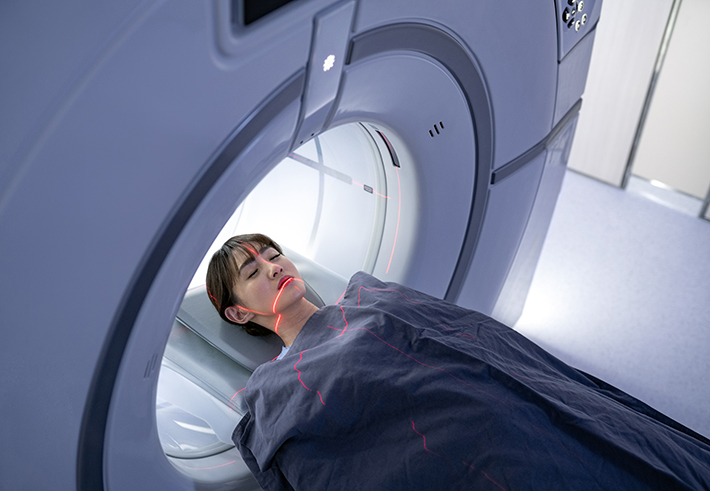
Standards for Safer MRI Scans
If you’re reading this, chances are good that you or a loved one have had at least one MRI scan in your lifetime. That’s because MRI, short for magnetic resonance imaging, is among the most commonly used diagnostic procedures in modern medicine, helping doctors treat some 10 million patients per year worldwide. And it is used for a wide variety of conditions, helping clinicians differentiate between healthy and unhealthy tissue in the brain, breast, spine, joints, heart, and more.
But, despite this widespread use, MRI scans do come with some risks.
Unlike radiation-based scans such as X-rays or computed tomography (CT) scans, MRI uses a series of powerful magnetic fields to “see” inside the body. This technology delivers highly detailed images that other methods cannot match, but the reliance on magnetic attraction means that metal can interfere with the procedure, particularly in the case of medical devices. This can have devastating consequences, such as the case in 1992 when a 74-year-old woman died after a metal aneurysm clip that had previously been implanted in her brain shifted during a routine MRI due to the magnetic forces.
READ MORE: Standards and Artificial Joints
That incident, and others like it, led ASTM International’s committee on medical and surgical materials and devices (F04) to develop a series of standards around MRI safety, tapping experts from healthcare, medical device manufacturing and more. Most recently, the subcommittee revised the standard practice for marking medical devices and other items for safety in the magnetic resonance environment (F2503), which outlines requirements for the marking of items – medical-related or not – that might be used in the magnetic resonance (MR) environment.
“There are three icons that are defined in this standard: MR Safe, MR Conditional, and MR Unsafe,” explains Terry Woods, Ph.D., acting director of the Standards and Conformity Assessment Program in the FDA’s Center for Devices & Radiological Health, who led the development of ASTM’s MRI safety standards. “If you go into pretty much any MRI facility in the world, you'll see those icons..”
The use of three universal icons is intended to make it easy for hospital staff and others to quickly and easily determine whether a given medical device or other item can be safely used within the MR environment, reducing the potential for accidents or injuries when completing an MRI procedure. The subcommittee on material test methods (F04.15), which developed the standard, was careful to word it so that it applies to all items, not just medical devices, to include things such as chairs, soap dispensers, gas cylinders, and other things that might be present in a hospital setting. The most recent revision also added suggested content for labeling that tells how and where items can be used within the MR environment.
“With F2503 in particular we had a lot of input from clinical practitioners, including radiologists who are in charge of MR sites and MR technologists who are scanning patients every day,” Woods says. “They need to know if it’s safe to scan a person or not.”
In addition to F2503, F04.15 manages several other standards that also address MRI safety.
1) Standard test method for measurement of magnetically induced displacement force on medical devices in the magnetic resonance environment (F2052)
Displacement in an MR setting refers to whether an object could fly through the air and harm someone or move inside a patient’s body when magnetic force is applied to it. This test method outlines determines if a given medical device could be displaced by these forces and potentially cause injury during an MR examination.
2) Standard test method for measurement of radio frequency induced heating on or near passive implants during magnetic resonance imaging (F2182)
Radiofrequency (RF)-induced heating is a phenomenon that sometimes happens when an item is placed in an MRI scanner whereby the magnetic field causes it to heat up and potentially cause burns. This test method measures the potential for RF-induced heating in a passive implant (things like hip implants that don’t use electricity) and how much its temperature might rise in the MR environment.
3) Standard test method for measurement of magnetically induced torque on medical devices in the magnetic resonance environment (F2213)
When a compass needle points north, it’s because it is lining up with the Earth’s magnetic field. The most common MRI scanners effectively create a magnetic field that's 30,000 times as strong as the Earth's, and so things that are magnetic will try to line themselves up with the MRI scanner when in the MR environment. This test method determines if magnetically induced torque produced by the MRI machine can cause injury.
On the whole, MRI remains a safe and effective imaging modality that benefits millions of patients every year. The labeling standard and others developed by F04.15 are designed to help ensure that medical professionals know what they need to do to safely scan people, and they are having an international impact. Using these labels, manufacturers, technologists, and others around the world can make sure that MR sites are safe anywhere on Earth.
“Given the millions of MRI exams each year, it is likely that all of us will need an MRI scan at some point in our life,” says Woods. “This standard is going to touch the life of anybody in the world who needs an MRI scan.”
Tim Sprinkle is a freelance writer based in Colorado Springs, Colorado. He has written for Yahoo, The Street, and other websites.
 SN Home
SN Home Archive
Archive Advertisers
Advertisers Masthead
Masthead RateCard
RateCard Subscribe
Subscribe Email Editor
Email Editor